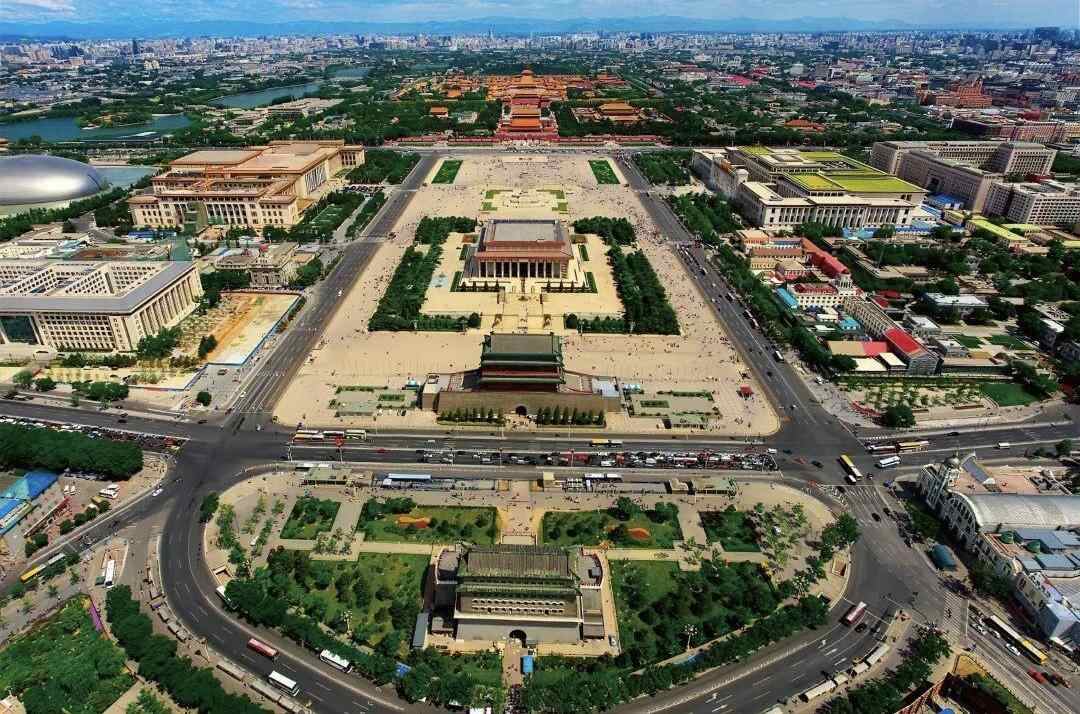At the 46th session of the World Heritage Committee in New Delhi (India) , the "Beijing Central Axis: A Building Ensemble Exhibiting the Ideal Order of the Chinese Capital" was approved to be inscribed on the World Heritage List. Also at this session, China's "Badain Jaran Desert - Towers of Sand and Lakes" and "Migratory Bird Sanctuaries along the Coast of Yellow Sea-Bohai Gulf of China (Phase II)" , formally submitted in 2020 and 2022 respectively, were reviewed and approved by the World Heritage Committee, also successfully entering the World Heritage List. This brings the total number of World Heritage sites in China to 59, including 15 natural heritage sites and four cultural and natural heritage sites.

The "Beijing Central Axis" stretches north-south through the old city of Beijing. Built in the 13th century and taking shape in the 16th century, it has evolved and expanded over time to reach 7.8 long, becoming the longest urban axis in the world. The "Beijing Central Axis" is comprised of five major remains: ancient imperial palace gardens, ancient imperial buildings, ancient urban management buildings, national ceremony, and public buildings, and the remains of central roads. Its site selection, layout, cityscape form, and design embody the paradigm of the ideal city described in "The Rites of Zhou: The Records of Trades", demonstrate the Chinese ancient imperial systems and urban planning traditions, and bear witness to the development and evolution of Beijing's city fabric.
It took 12 years for "Beijing Central Axis" to be inscribed on the World Heritage List, a period that can be divided into three stages: the initial stage (2012-2016), the accelerating stage (2017-2021), and the final stage (2022-2024). On May 30th, 2024, the International Council on Monuments and Sites (ICOMOS) issued an evaluation report, concluding that the "Beijing Central Axis" should be directly inscribed on the World Heritage List, which provides a solid basis for the inscription.
The Badain Jaran Desert , located on the Alashan Plateau , is an extremely arid temperate desert in northwest China. It is China's third-largest desert and second-largest drifting desert. Its significant landmarks include the tallest stationary dunes on Earth (reaching 460 meters in height), numerous scattered desert lakes, the most extensive area with the singing sand phenomenon, and diverse wind-erosion landforms, which demonstrate extraordinary natural and aesthetic values.
Yang Ziyan, a member of the Chinese delegation to the 46th session of the World Heritage Committee and head of the public relations department of the China Association of National Parks and Scenic Sites , pointed out: "The successful inscription of the 'Badain Jaran Desert' provides a solid foundation for further research into the formation of desert sand dunes and the protection of desert lakes that lie between the dunes. It also fills the gap of desert type for China in World Natural Heritages, which is of great significance. At the same time, it presents to the world the unique value of China's lakes and dune-dominated desert features in terms of natural heritage, demonstrating its universal value as a treasure worthy to be jointly cherished by all mankind."
Source: Yangcheng Evening News
















